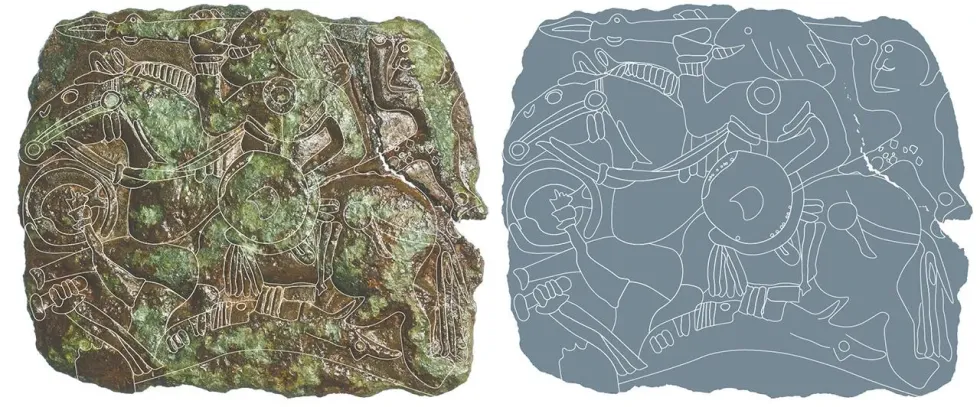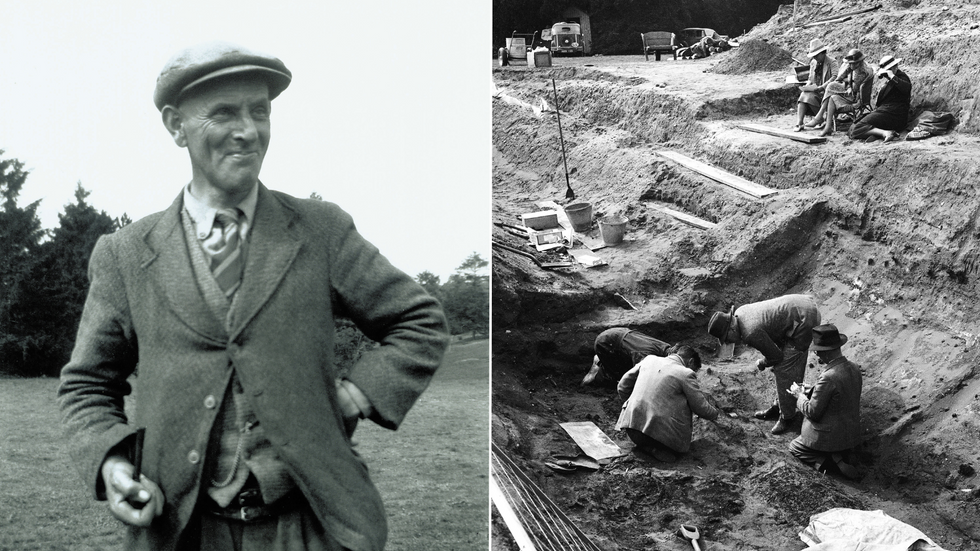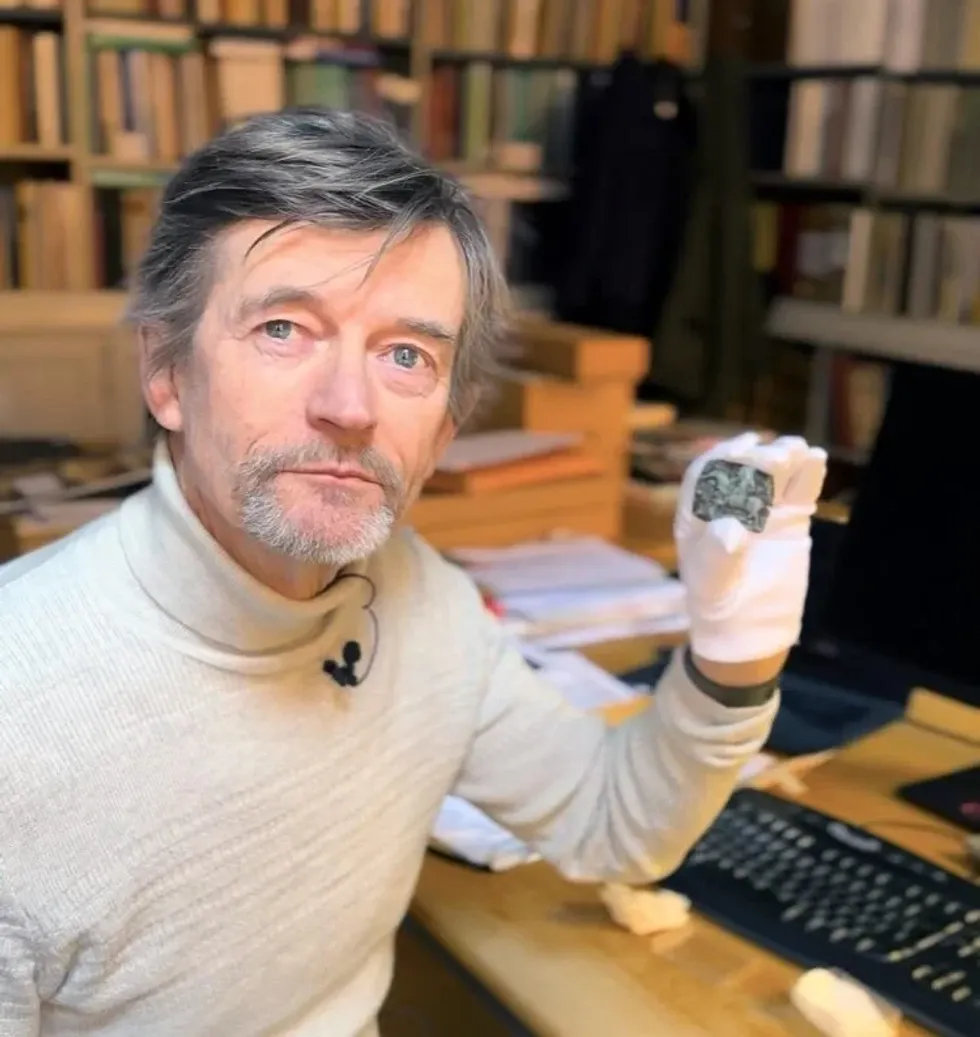A small metal stamp turfed up by a detectorist could rewrite the history of the Sutton Hoo helmet
Don't Miss
Most Read
Trending on GB News
A remarkable archaeological discovery on Denmark's Tasinge island may rewrite the history of one of Britain's most treasured artifacts.
The Sutton Hoo helmet, sometimes dubbed "Britain's Tutankhamun," has long been thought to have Swedish origins.
However, a small metal stamp recently found by a detectorist shows striking similarities which point to Danish craftsmanship instead.
Two years ago, Jan Hjort was scanning a field with his metal detector when he unearthed a small, green-tinged copper alloy object.

PICTURED: The Sutton Hoo helmet and its reconstruction, both in the British Museum
WIKIMEDIA COMMONS/PA
Initially mistaken for an ordinary picture plate, researchers later identified it as a "patrice" - a metal stamp used for imprinting motifs onto thin metal sheets.
The five-by-four-centimetre object was first brought to Denmark's Svendborg Museum before being transferred to the National Museum of Denmark for analysis.
The Sutton Hoo helmet was unearthed by archaeologist Basil Brown in Suffolk in 1939 as part of a wealthy Anglo-Saxon ship burial.
Experts believe it belonged to King Raedwald of East Anglia, who died around 624 AD.
The burial site contained over 260 artifacts, including gold coins, a shield, and an 88-foot-long burial ship.
REMARKABLE FINDS IN BRITAIN'S SOIL - READ MORE:

Initially mistaken for an ordinary picture plate, researchers later identified the item as a 'patrice'
NATIONAL MUSEUM OF DENMARK

Basil Brown discovered the Sutton Hoo burial site in 1939
PA
Until now, researchers attributed the helmet's origins to eastern Sweden's Uppland region due to similar motifs on Swedish helmets.
The resemblance between the two artifacts goes beyond general style, with both featuring mounted warriors with identical details.
Specific commonalities include the shape of the horse's harness, a cuff on the warrior's wrist, and a figure below the horse - while even finer details match exactly, including the horse's tail, nosepiece, and mane.
But a once-disregarded motif on the Sutton Hoo helmet has even more in common with the Danish stamp, suggesting the Sutton Hoo helmet could have originated in Denmark rather than Sweden.
Experts now consider the possibility that the same craftsmen who created the patrice may have produced the helmet.
LATEST ARCHAEOLOGY NEWS:

Peter Pentz, curator at the National Museum of Denmark, pictured holding the patrice
NATIONAL MUSEUM OF DENMARK
Peter Pentz, curator at the National Museum of Denmark, said it is "still too early to draw any conclusions", but if confirmed, this theory would significantly alter our understanding of seventh-century Northern European history and politics.
Denmark, traditionally overshadowed by England and Sweden in archaeological significance, may have been at the forefront of the region's political and artistic landscape.
The discovery also suggests Tasinge could have been the location of a seventh-century metal workshop, with metal scraps and a thin sheet of silver found nearby.
To strengthen their argument, researchers plan to create detailed 3D scans of both the patrice and the Sutton Hoo helmet, which will allow for precise comparisons that could either prove or debunk the theory of a shared origin.
The patrice is now on public display at the National Museum of Denmark in Copenhagen.









